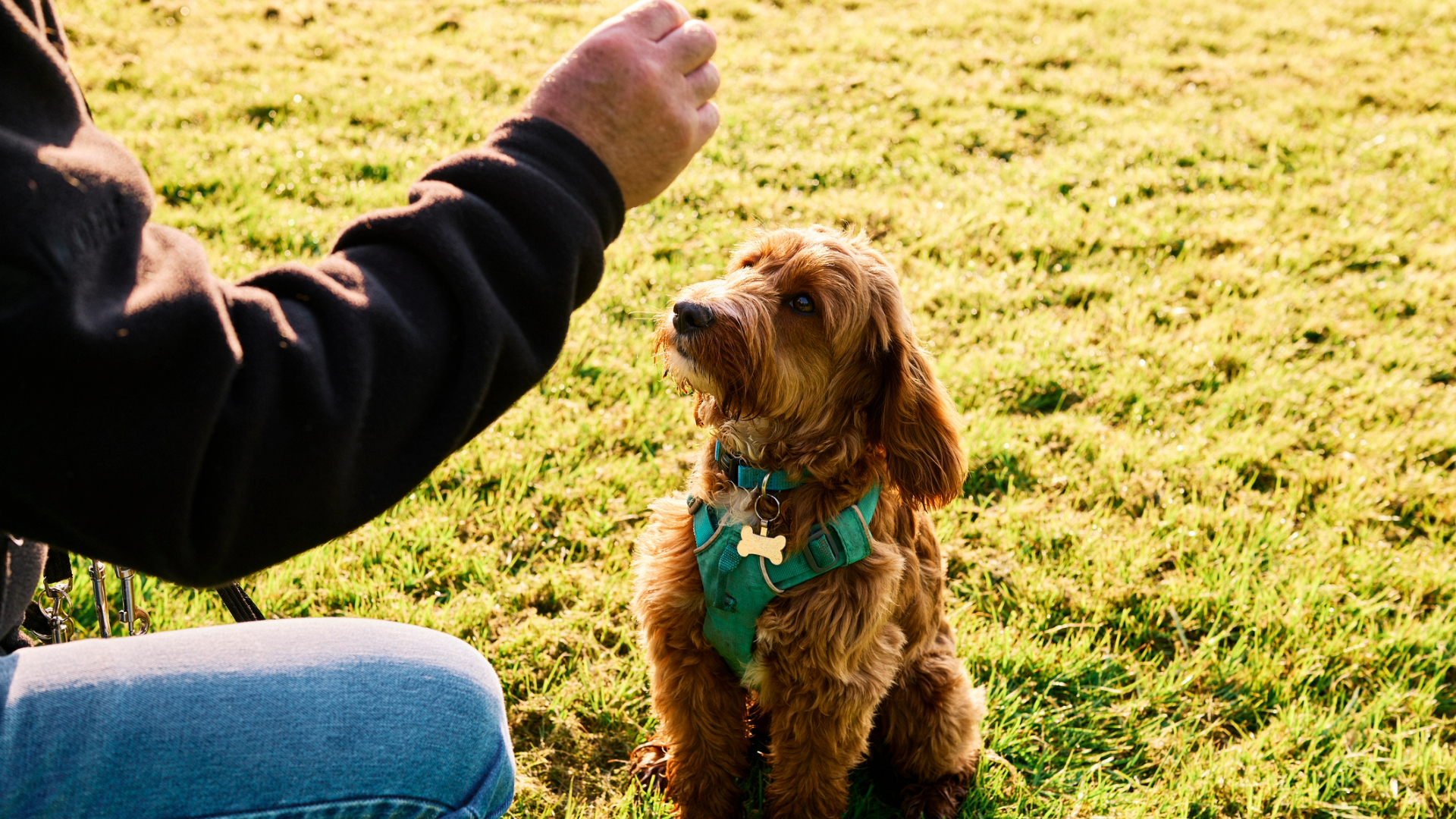
There’s lots of great training advice out there, but we’re here to tell you that you don’t need to know absolutely everything to get started.
For many dog parents, especially those wondering how to calm down a hyper dog, focus can be the biggest hurdle. But once you’ve got over it, you’ll be ready to take on anything.
Mattison Skoog, an expert dog behaviorist, thinks the same and recently shared three tips on how to achieve this.
She says it’s best to start small and the quickest way you’ll make progress with your training is by ”having an incredibly clear marker system with high reinforcement history and focus work.”
When you’re consistent, positive reinforcement for dogs is very effective, according to the Journal of Veterinary Behavior.
These things might feel small, but you’d be surprised at how much they will propel you in your dog training journey if you nail it. In fact, Mattison says it got her halfway there to some of her training goals last year, which is proof it’s worth investing your time into.
Here are her three top tips:
1. Establish a termination marker
You might be wondering how a marker system works. In short, your dog learns to repeat good behavior because they know they’re going to be rewarded for it after hearing the marker. The marker could be the word “yes” or using clicker training for dogs, which is then followed by a reward (like food). Make sure you repeat this every single time so your dog learns to predict the treat.
2. Catch their gaze
The best way to get a dog’s attention? It involves food, of course. Take the treat to the side of your face, move it to the center of your eyes, use your marker, and then reward them with the treat. Practice this technique a few times and they’ll be sure to notice you quickly.
3. Wait for eye contact
If you’re looking for another technique that involves food, this one works well too. Take the treat and hold it three or four inches to the side of your eyes. Wait for your dog to make eye contact with you, and when they do, use your marker and reward them with the treat.
Mattison notes that you should always learn new skills in the easiest environments with low distractions, and places like the park are not the best of places.
Want more ways to engage with your dog? Here are seven fun games for reactive dogs and 10 great brain games for dogs.







